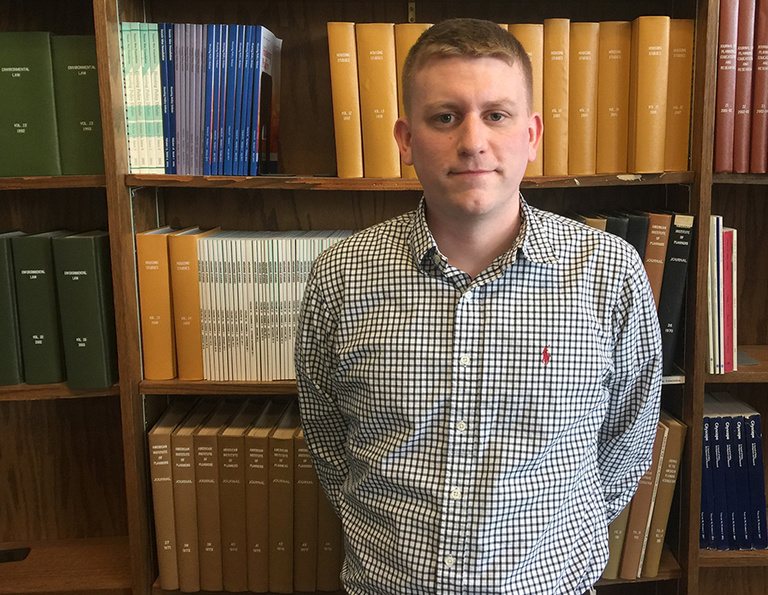Name: Adam Kofoed
Originally from: West Branch, IA
Degree: M.S. Urban and Regional Planning, concentration in Housing and Community Development
Graduating class: 2018
While campaigning for a presidential candidate, Adam Kofoed went into a lower income Indianapolis neighborhood convenience store to buy a lemonade when his academic future became crystal clear.

“I waited about 30 minutes while people were getting groceries since they didn’t live near a grocery store,” Kofoed recalls. “It’s considered a food swamp when you get food at a convenience store, but you don’t get all the necessary nutrients you need. That was the last straw. It was a shock to me. That was when I was sure I wanted to go to graduate school.”
Seeing how local planning policies impact citizens, such as the systemic location of grocery stores, Kofoed enrolled in the University of Iowa’s School of Urban and Regional Planning in 2016.
Kofoed, a native of West Branch, Iowa is convinced he made the right decision in choosing the UI for his training as a planner.
“Their research assistant program is really strong, and getting a small stipend really helps,” Kofoed says. “We also do a lot of projects. There’s been a lot of opportunities to get real-world experience. In job interviews, I can point to specific planning examples and past work experience examples.”
His past work experience as an Army communications supervisor (2009-2012), stationed in South Korea, has helped shaped his ability to positively interact with citizens and community leaders during improvement projects.
“Being in the Army has helped prepare me to have confidence when communicating difficult issues. It has helped me in how I phrase things and how I ask questions,” says Kofoed, a second-year master’s student.
Kofoed’s field problems project involves helping create Cedar County’s Great Places Visioning Plan. He is assembling application materials to help Cedar County apply for an Iowa Great Places designation, a program administered by the Iowa Department of Cultural Affairs.
In compiling the application materials, Kofoed and his colleagues have researched barriers low income families run into, the prospect of new families moving into Cedar County, and entry-level housing and rental units.
Kofoed and his fellow students used data to project why housing diversity is important for both equity and recruiting young adults. He also discovered that there has been an 8 percent decrease in rental properties in the last 15 years in Cedar County.
“You have to overcome the misconception that people who inhabit rentals don’t take care of their property,” Kofoed says. “There needs to be incentives to improve the quality of rentals for either the landlord, owner, or renter. This can be done through establishing building codes or tax incentives to improve the quality of older housing units.
Often times, lower quality housing is unsafe or blighted, and gets demolished which leads to a decrease in the rental supply or lower priced housing. If Cedar County wants to address the need of bringing young adults into the county, it’s difficult because there’s not a lot of entry level housing units or rental units.
“Overall, the school has done an excellent job preparing me to understand the principles of planning and how they will apply to my future jobs and projects.”